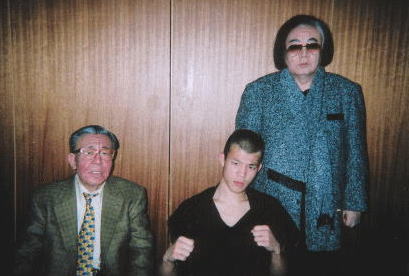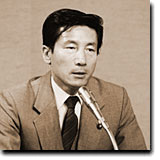Fans of Ghibli Studios and the Earthsea novels are surely interested in how Ghibli’s interpretation turned out. Not so good, it looks like, judging from some reports and the original author’s reaction. From the general sound of things, it seems that Goro wasn’t up to the task after all. That’s unfortunate.
But I’m not here to talk about that. My interest is in the blog post that Kikko, Japan’s mysterious and popular (but no longer top) political blogger, wrote on the film. The bulk of the post is a translation of Le Guin’s official reaction to the movie, but she prefaces that with a conversation between two young women that she supposedly overheard on the train. Below is a translation of just the conversation:
A: Oh no! At this rate, I’ll fall right to sleep!
B: Oh? Are you not getting enough sleep, Kyoko?
A: Hm, every night it’s too hot…If I sleep with the A/C on, my skin gets dry and so does my throat!
B: Well, then you should just go see Earthsea!
A: Why’s that?
B: I went to see it last week with Marie and Chika, but I fell asleep a half hour after it began because it was so boring…and when I came to the end credits were rolling!
A: It’s that boring?
B: I didn’t see almost any of it, but Marie and Chika said they couldn’t stand it and fell asleep about halfway through…so it looks like at least the first hour is boring enough to make you sleepy…
A: But, the TV and everything is saying it’s a “big hit in theaters!” right?
B: Really? Since I was let down by Howl’s Moving Castle, I had hope this time would be better, but this was way more boring than Howl…It’s like, rather than tell the story with animation, the characters just explain the story in order with long monologues…so I gradually started to feel sleepy, then eventually closed my eyes and just listened to the lines, and then just fell asleep.
A: Oh, I see.
B: Like, since all the lines are long and in a monotonous explanatory tone, it makes you feel like you’re being forced to listen to a lecture by Oishi the Section Chief.
A: Really??? Haha…
(emphasis added)
Kikko’s comments that follow the above conversation criticize the mass media for caving in to pressure from promotional agencies such as Dentsu by lavishing unearned kind words on movies and other products even when they are clearly terrible as in the case of Earthsea.
As poignant as Kikko’s sentiments may be, I have a hard time believing that Kikko actually overheard such a conveniently-worded conversation. She claims not to have seen the movie (typical of her other lengthy articles about Japanese anime) yet but has no problem using a supposedly overheard conversation to back up criticism of the media and badmouth a movie she hasn’t even seen. If that’s true then it’s irresponsible, and if not then, well, she’s being just as dishonest as Dentsu and the mass media, isn’t she?
Since an article posted on her site broke a major development in the faked earthquake safety data scandal last year (and in the several stories she’s had pertinent information on since), wide and well-founded speculation has spread that the purported writer of this blog (a “hair and makeup artist” in Tokyo) does not really exist, or at least that there is something less than forthcoming about the source of the blog’s content. One theory (as noted in a “Kikko Watching” wiki) is that the site serves as the repository of one or more news reporters that use it to reveal information that can’t make it past editors in the major publications. This is the theory I’m going with, so check back in a few months or so when the truth is finally known to see if I was right.
Whatever the source of the articles on Kikko’s blog, the site has been extremely entertaining and illuminating as it often contains information and analysis that is simply not available elsewhere. However, there are many many other instances where I am left shocked at the claims Kikko’s site makes. For example, her repeated claim that weapons of mass destruction were and are being used by the US military in Iraq are not backed up by any credible evidence whatsoever, and sources she does cite for other issues have turned out to be fake. And then there are the suspicious quotes and anecdotes, one of which I have translated above.
Clearly any blog’s comments cannot be taken as gospel truth, especially when coming from one as mysterious as Kikko’s. But the scandal over Kikko makes me wonder: when the newspaper can’t even tell you when a film sucks, perhaps it’s preferable to hear the truth from a frank and knowledgeable fraud than swallow lies from the opaque and manipulative establishment.







